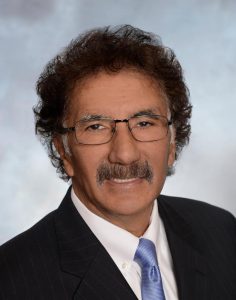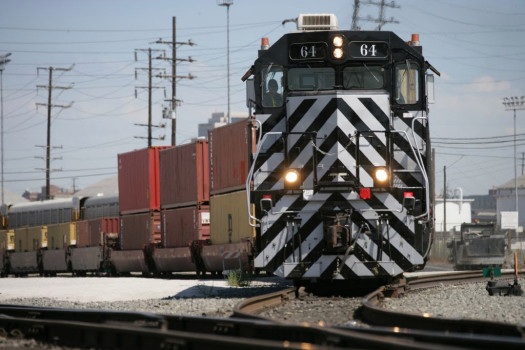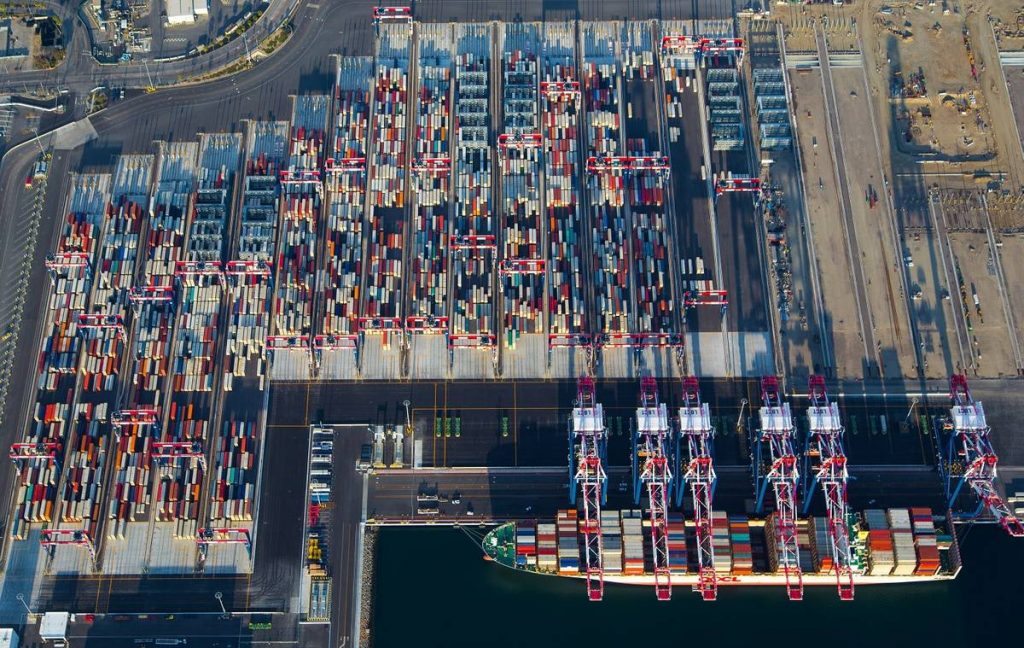Mario Cordero, executive director of the Port of Long Beach, Calif., said the port’s business prospects for this year are bright, even as the port reported that in 2018 it handled nearly 8.1 million twenty-foot equivalent units (TEUs), a nearly 7 percent increase over the prior year.
Long Beach Port Booming
A strong U.S. economy, tame inflation, interest rates that are under control, low unemployment and the likelihood of growing wages are all likely to boost consumer spending and benefit the port, he said.
Mario Cordero, Executive Director of the Port of Long Beach
As to the higher tariffs that the U.S. and China have imposed, he said: “With so much at stake on both sides of the Pacific, we believe the United States and China can resolve their differences, keep our respective economies growing. In our view we see gains in 2019, although probably at a more conservative level.”
During 2018, the port moved 8,091,023 TEUs of containerized cargo, an increase of 7.2 percent. Imports grew 6.1 percent to 4,097,377 TEUs. Exports totaled 1,523,008 TEUs, up 3.6 percent; empties increased 11.8 percent to 470,638 TEUs.
Enjoying our insights?
Subscribe to our newsletter to keep up with the latest industry trends and developments.
Stay InformedIn December, the port handled 741,647 TEUs, a 6.4 percent increase compared to December 2017. That was the second-busiest month ever for the Port of Long Beach, behind June 2018. Imports rose 7.9 percent to 373,098 TEUs. Outbound TEUs dropped 17.5 percent to 113,329, while empties jumped 19.4 percent to 255,220 TEUs.
Increase in Rail Transport
Cordero said the port is moving ahead with plans to increase the share of cargo that moves through the port by rail, which he said is more efficient and sustainable than using trucks.
“Rail is a big part of our green future,” he said.
With ships getting larger and trains longer, he said the port has plans to spend $1 billion on rail improvements. These include $870 million for improvements to benefit Pier B in the port, a second track between Pier G and Pier J and realignment of tracks on Terminal Island, which will benefit five terminals. He said in March the port will move forward to close a rail crossing on Ninth Street in the city that will allow the use of larger trains.
The port moves nearly 30 percent of cargo in and out by rail and those plans will boost the share to 25 percent. Long term, Cordero has the ambition to move half of containers in and out of the port by rail.
He said rail allow importers and exporters of cargo from East Asia to move cargo to and from the Midwest faster than through Gulf and East Coast ports.
He made a pitch to U.S. exporters of soybeans, grain, refrigerated meat and poultry, and plastic resin to Asia, telling them, “Our rail will move your cargo faster and more efficiently and we are on track to make it even better for you in the years ahead.”
 Trans-Pacific Cargo
Trans-Pacific Cargo
The port is handling larger ships, and Cordero noted that unlike at many ports around the world where only a small portion of their total cargo may be discharged or loaded, in Long Beach most ships exchange most of their containers after a trans-pacific crossing, and he emphasized numerous times the “operational excellence” of the port’s terminals and longshore labor.
Cordero noted that construction of the Long Beach Container Terminal (LBCT) in the port is two-thirds completed. Due to be completed in early 2021 it alone will have capacity to handle 3 million TEUs. To put that into perspective, he noted only five U.S. container ports handled more than 3 million TEUs in 2017.
However, Cordero said nothing about the sale of LBCT that was mandated by the U.S. government when China’s COSCO bought a controlling stake in LBCT, the parent company of container carrier OOCL.
Cordero said universal appointment systems in the port are necessary to move cargo through the port efficiently and noted that the port tested General Electric’s Port Optimizer information portal for sharing cargo data, saying it can improve truck turn times and reduce how long containers sit at terminal and lower cargo handling costs.
He said the ITS terminal at the port is using predictive analytics to let cargo owners and motor carriers know five days in advance when cargo is available for pickup.
The port needs to innovate and have an “Amazon or Tesla state of mind” to find ways to move cargo more quickly and efficiently, Cordero said.






 Trans-Pacific Cargo
Trans-Pacific Cargo
















